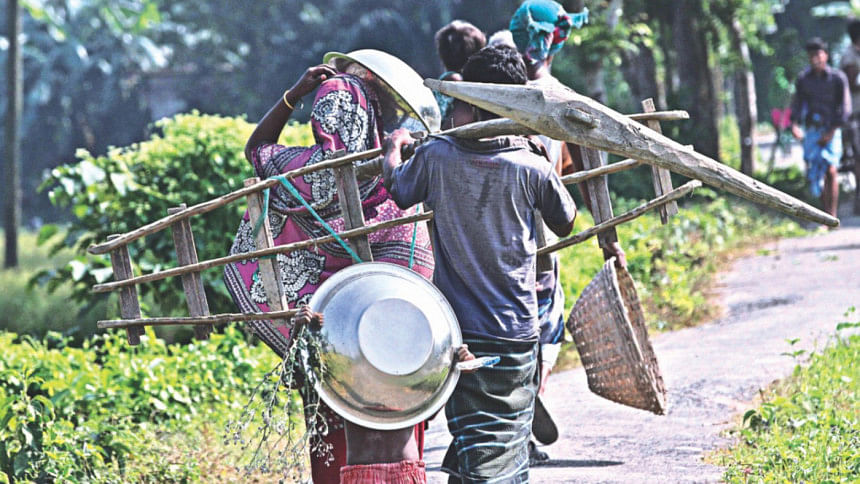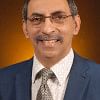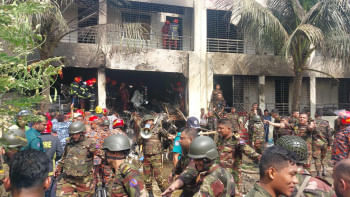Why are social safety net programmes so crucial?

I have been asked by several close friends recently, why we need social protection measures to address poverty in Bangladesh—a country which has the world's largest microcredit programme. One might ask: is it because the microcredit programme is not fulfilling its promise of alleviating poverty and social protection is therefore going to replace it?
Let me start by briefly explaining the major difference between the two and what these are supposed to deliver. Through microcredit, small amounts of loan are given to poor women and men to help them become self-employed or initiate small-scale income generating activities that would help them come out of poverty. This poor segment of the population is unable to access credit from the formal financial sector due to their inability to arrange collateral. Most microcredit programmes adopt group centred lending approach and they are run by non-government organisations. Bangladesh pioneered microcredit programme since the late seventies which has gained popularity now in many other developing Asian and African countries.
Social protection, alternatively called social security or social safety net programme, is a set of policies and programmes aimed at reducing social and economic risk and vulnerability of the poor, enhancing their capacity to protect themselves against hazards and loss of income including under emergency situations. Social protection programme includes conditional or unconditional cash transfers or food assistance to poor families often through public works programme, provision of unemployment benefits, building of skills through training programmes to increase labour productivity and income, investing in more productive agricultural activities to improve household nutritional status and income, and supporting families to access basic education and primary health care services. A comprehensive social protection system covers all segments of vulnerable population including the unemployed, disabled, sick, aged, orphans, women-headed households, street children, etc.
Today, the number of people living below the poverty line in Bangladesh is estimated to be 35 million. A significant part of this population is covered by microcredit programme. It offers a broad-based opportunity to reduce poverty. Over the last four decades, the microfinance industry has come up with a range of options in borrowing, savings and insurance to low income people. Microcredit is meeting the credit needs of these people who otherwise would not have access to any credit facility other than taking loan from money lenders at high interest rates. The cumulative loan disbursement of nine large NGOs and Grameen Bank together stood at Tk 679,615 crore in 2018-2019. They cover a total of 37 million borrowers.
It is well recognised that microcredit alone cannot pull all the poor people out of poverty. One assumption for microcredit to succeed is the ability of borrowers to invest in income-earning activities—in the context of Bangladesh which are, poultry raising, goat rearing, cow fattening, vegetable gardening, small-scale farming, fisheries, potteries, bamboo products, etc. Most of the borrowers are active women and men. The success of microcredit is based on production and marketing of their produces and therefore, those not so enterprising will not venture at borrowing. The poorest of the poor normally avoid it. Therefore, a significant portion of vulnerable population needs other types of support to help them bail out of poverty.
Bangladesh has adopted a Social Security Strategy in 2015. In 2018-19, a total amount of Tk 64,176 crore was allocated from government budget for social safety net programmes. The allocation was 13.81 percent of the annual budget and 2.53 percent of the GDP.
There are a number of important social protection initiatives in Bangladesh. Some of these are: old age allowance that benefited four million people in 2018-19; widow and destitute women allowance for 1.4 million people; maternity allowance for poor mothers provided to seven lakh women, and a working lactating mother assistance programme which benefited 2.5 lakh women during the same year.
Other programmes include allowance for the financially insolvent disabled citizens, stipend for the disabled students, a health programme to provide free physiotherapy and other treatments to the disabled people, and support to non-government orphanages benefiting 98,000 orphans. There is provision for open market sale of food items for low income people which benefited 12 million people in 2018-19. The Vulnerable Group Development Programme, Vulnerable Group Feeding Programme and Gratuitous Relief Programme provide food assistance and employment generation opportunities. The Ashrayan project supports the landless and homeless families through income generating activities like handicrafts, poultry, pisciculture, gardening, agriculture, cattle rearing, etc.
One House One Farm project is for near landless households to develop family farms centring on fisheries, poultry, cattle rearing, nursery, kitchen and vegetable gardening. The Comprehensive Village Development Programme helps the poor in the poverty stricken areas with self-employment. Palli Daridro Bimochon Foundation works in 357 upazilas and has helped 20 lakh rural people with self-employment and income generating activities in 2018-19. Small Farmers Development Foundation helps with poverty reduction of small farmers and landless rural people in 173 upazilas. Palli Karma Sahayak Foundation works for poverty alleviation through social safety net and women's empowerment programmes with the help of 278 partner organisations in 164 upazilas.
Ending poverty, which is the inescapable agenda of today's world, requires action across multiple arenas and should be approached from social protection and microcredit angles— both of which are tested means of poverty reduction. The two approaches can also be combined. Brac in 2002 introduced a new initiative combining these two approaches for the ultra-poor to enhance their livelihood through promotional (assets and skills training) and protective (stipends for students and health services) measures. Those who participated in this programme and demonstrated the potential to borrow were eventually enrolled in the microcredit programme. About 70 percent of them borrowed money and repaid them regularly.
Microcredit is not a panacea for poverty reduction. There are 35 million people still under the poverty line in Bangladesh; therefore, there is a need for a strong and expanded social protection programme alongside the microcredit programme in the country.
Dr Nawshad Ahmed is an economist and urban planner. He worked previously as a UN official in Bangladesh and abroad.

 For all latest news, follow The Daily Star's Google News channel.
For all latest news, follow The Daily Star's Google News channel. 



Comments